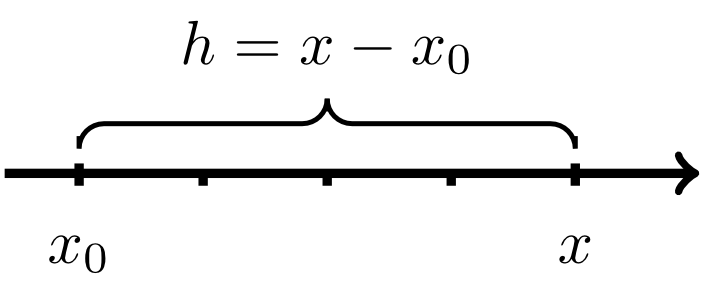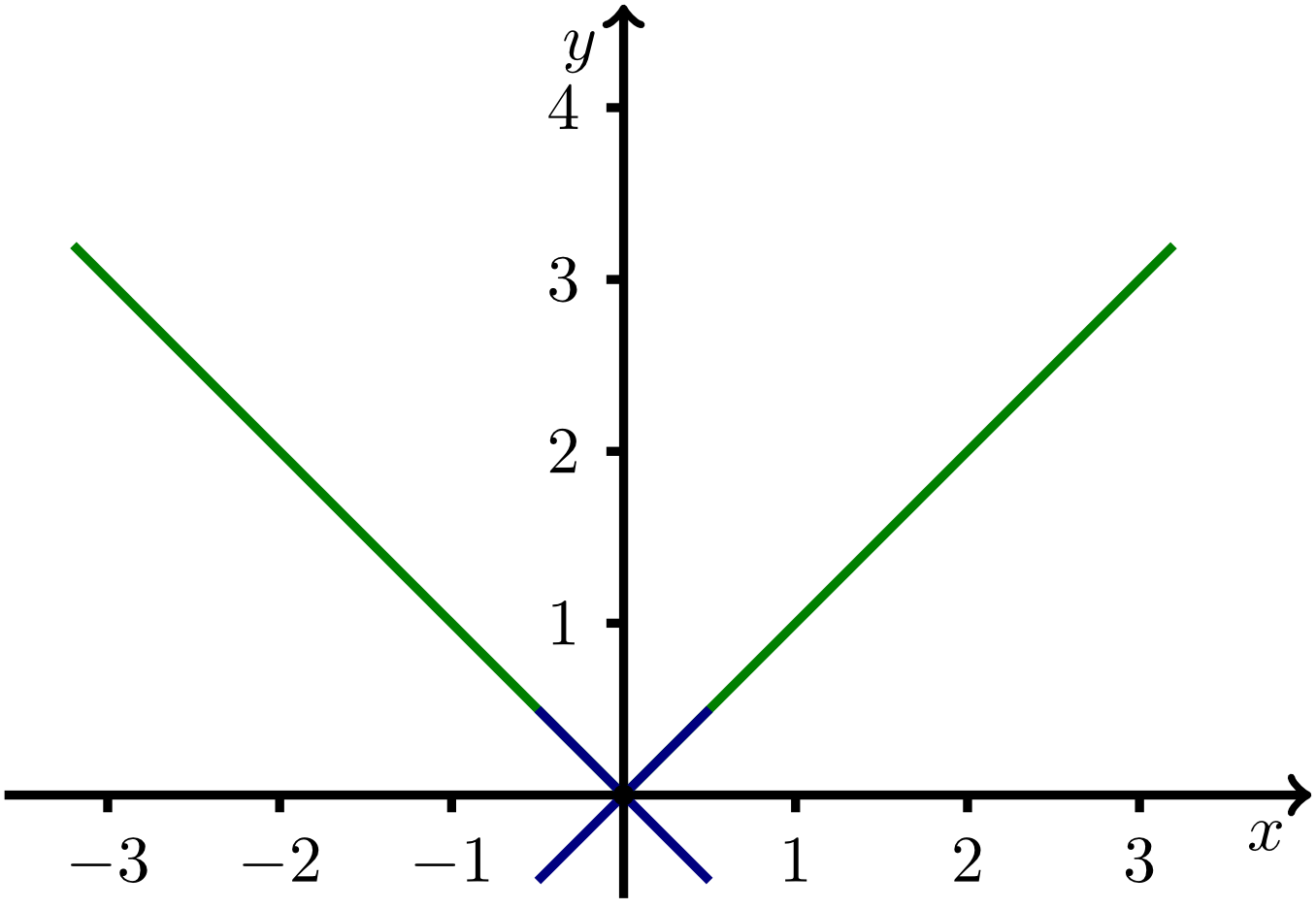Chapter 7 Differential Calculus
Section 7.1 Derivative of a Function7.1.3 Derivative
Notation of the Derivative 7.1.3
In mathematics, sciences and engineering, different but equivalent notations for derivatives are used:
These different notations all denote the derivative of the function at the point .
These different notations all denote the derivative of the function at the point .
If the derivative is to be calculated using the difference quotient , then it is often convenient to rewrite the difference quotient in another way. Denoting the difference of and by (see figure below),
the difference quotient can be rewritten as
where . There is no statement about whether has to be greater or less than . Hence, the quantity can take positive or negative values. To determine the derivative of the function , the limit for has to be calculated:
If this limit exists for all points in a function's domain, then the function is said to be differentiable (everywhere). Many of the common functions are differentiable. However, a simple example of a function that is not differentiable everywhere is the absolute value function with .
Example 7.1.4
The absolute value function (see Module 6, Section 6.2.5) is not differentiable at the point . The difference quotient of at the point is:
Since can be greater or less than , two cases are to be distinguished: For , we have , and for , we have . In these two cases, the limiting process, i.e. approaching , results in two different values ( and ). Thus, the limit of the difference quotient at the point does not exist. Hence, the absolute value function is not differentiable at the point .
The graph changes its direction at the point abruptly: Casually speaking, one says that the graph of the function has a kink at the point .
Since can be greater or less than , two cases are to be distinguished: For , we have , and for , we have . In these two cases, the limiting process, i.e. approaching , results in two different values ( and ). Thus, the limit of the difference quotient at the point does not exist. Hence, the absolute value function is not differentiable at the point .
The graph changes its direction at the point abruptly: Casually speaking, one says that the graph of the function has a kink at the point .
Likewise, if a function has a jump at a certain point, a unique tangent line to the graph at this point does not exist and thus, the function has no derivative at this point.
 Onlinebrückenkurs Mathematik
Onlinebrückenkurs Mathematik

